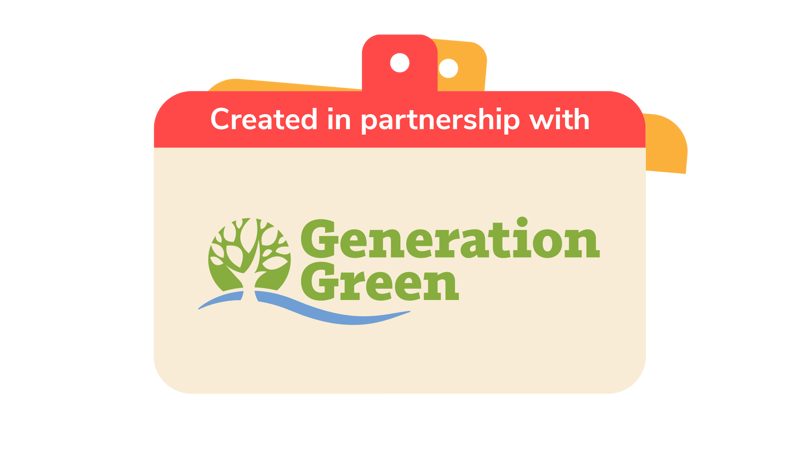
Flower power
You’ll need
- Mixing bowls
- Something to protect surfaces (for example, newspaper or tablecloths)
- Gardening tools
- Gardening gloves
- Weather appropriate clothing
- Access to water
- Meadow flower seeds (or seeds or flower heads collected from the garden)
- Peat-free compost
- Powdered clay (found in craft shops)
- Cups
- Mixing spoons
- Aprons
Before you begin
- It’s best to plan your project for springtime – March and April are the best months to sow wildflowers.
- Buy a wildflower seed mix. Make sure you use UK-native wildflower seeds. You could also collect seeds or flower heads from wildflowers that have died back when you’re out walking or hiking in late summer or early autumn. You’ll need to dry the seeds on paper and store them in an envelope.
- For your seed bombs, you’ll need one or two buckets of peat-free compost (organic is best, if possible). Make sure you have permission to use it.
- If you can’t get hold of powdered clay, you can use clay-rich soil, as long as you have permission to use it and it’s not sourced from a conservation site. The method’s a little different, so we've included additional instructions.
- Cover a flat surface with newspaper (or a washable tablecloth) and set out all the equipment you’ll need.
- Young people are likely to get messy due to the powdered clay, so kit them out with aprons and set up a hand washing station.
- The seed bombs will take a while to dry, so it’s best to do this activity over two or more sessions. Once they’re dry, they can be kept in a cool, dry, dark place until you’re ready to use them.
Safety checklist
Use the safety checklist to help you plan and risk assess your activity. Additional coronavirus-related controls to think about may include:
- Set up a hand washing station that you can use throughout the session.
- Make sure people wash their hands before and after using any shared equipment or resources.
- Clean any equipment between different people using it.
- Remind everyone to stay a safe distance apart at all times. If it works better for you, you could make the seed bombs individually, rather than in groups.
Talk nature
- The person leading the activity should help everyone remember what they’ve learned about biodiversity, and what they’ve found out about the wildlife they’ve investigated. What actions have they already started taking to support their environment?
- Everyone should talk about why wildflowers are important.
Plan your wildflower space
Wildflower areas can be any size, but why not go big? Get everyone involved in researching your local area. Could you get permission to clear some land and turn it into a wildflower meadow? If you need some more support, check out the tips on securing a piece of land in Our wild community garden.
Everyone can get stuck into planning what they need to do to put this into action:
- If you haven’t got any skilled gardeners in the group, your first step might be to find some volunteers to help you. Are there any green-fingered parents or carers? Does your local park have volunteer gardeners?
- Think about wildlife you want to support and what flowers and plants they’d like. For example, bees love flowers that have lots of pollen, like primrose and marigolds. Having a good mix of different flowers will help make sure there’s something for all types of bees.
- Think about what you’ll need to do to prepare the area.
- Work out how many seed bombs you’ll make. Think about how much space the flowers will need to grow. Do you want to cover the whole area using seed bombs, or do you want to try sowing seeds the old-fashioned way too? If you’re sowing the seeds, you’ll probably need to do some work to prepare the soil first.
Make your seed bombs
- Separate into groups of around four to six – each group should make one portion of seed mix.
- Mix together one cup of seeds with five cups of peat-free compost and two or three cups of clay powder.
- Mix in water until everything sticks together.
- Roll the mixture into firm, golf ball-sized balls.
- Place the balls on newspaper and leave them to dry in a warm place.
- Split into groups of around four to six people.
- Add a little bit of water to the clay-rich soil and peat-free compost. Keep them separate and aim to make them damp – not wet.
- Begin to knead the soil and compost together, until they’re mixed together and feel like a dough. To knead, use the base of your palm to push the soil and compost down and away from you. Then fold the mixture in half and press it down. Keep repeating these steps until you’ve made a muddy dough.
- Add a sprinkle of seeds and roll the mixture into balls. If you have it, a little paprika will stop the birds from eating the seeds.
- Leave the seed bombs somewhere safe to dry.
Throw and grow
- Everyone should gather in the chosen spot and get ready to do some gardening.
- Everyone should think about how they’ll track the difference they make.
- It’s time to prepare the area. Everyone should clear any rubbish and remove any invasive weeds.
- Everyone should work together to plan where their seed bombs will go – and have fun throwing them!
- Once everyone’s planted all of their seeds, they should plan how they’ll look after the space.
- Everyone should check in on their space as they wait for summer to arrive and their flowers to grow.
Enjoy your space
- Wildflower areas are great spaces for humans to enjoy too! Everyone should take time to really enjoy the beauty of the wildflowers they’ve grown – can they notice their different shapes, colours, and smells? Can they identify the different wildflowers that have sprung up?
Reflection
This activity gave people an opportunity to show how much they value the outdoors. Planting wildflowers is one way to help wildlife by creating thriving habitats. Can anyone think of other ways to help local wildlife? People may think about building bird houses, bird baths, butterfly feeders or bug hotels. Can anyone think of things that harm wildlife and their habitats? People could think about litter or pollution. What can people do to help reduce the challenges wildlife faces?
The activity also gave people a chance to help their communities. How did planting wildflowers help others in the community? People could think about how having nice, wildlife-friendly spaces boosts wellbeing. How did people get others in the community involved in their seed bomb project?
Safety
All activities must be safely managed. You must complete a thorough risk assessment and take appropriate steps to reduce risk. Use the safety checklist to help you plan and risk assess your activity. Always get approval for the activity, and have suitable supervision and an InTouch process.
- Gardening and nature
Everyone must wash their hands after the activity has finished. Wear gloves if needed. Explain how to safely use equipment and set clear boundaries so everyone knows what’s allowed.
- Hand and electric tools
Inspect tools for any damage before each use. An adult should supervise people using tools, and people should follow instructions on how to use them correctly and safely. Tools should be properly maintained and kept sharp.
Use an appropriate surface and make sure materials are stable and supported when you’re working on them. You should cut and drill away from the body and in an area clear of other people. Be extra cautious of trailing cables and water when using electric tools. Always use a cordless tool if one’s available.
- Outdoor activities
You must have permission to use the location. Always check the weather forecast, and inform parents and carers of any change in venue.
Wildflower areas can be any size, from a plant pot to an entire meadow. Work together to plan a project that gives you an achievable challenge and that you can be proud of.
- Anyone who doesn’t want to put their hands in the seed bomb mixture can use a spoon.
- Make sure the location you choose for your wildflower space is accessible for everyone.
- There will be lots of different jobs to be done when you're planning and creating your wildflower space, so everyone can take on a role that they're comfortable with.
All Scout activities should be inclusive and accessible.
You could send some seed bombs to a local business, school, or decision maker as a gift. Encourage them to help you spread butterfly and bee-friendly wildflowers throughout your local area.
Make sure everyone in the group has a chance to share their thoughts and ideas. Everyone should have the opportunity to play an active part in shaping their project.


